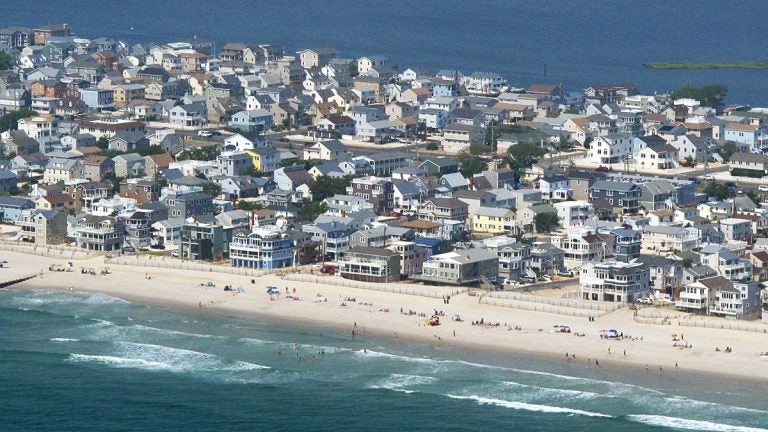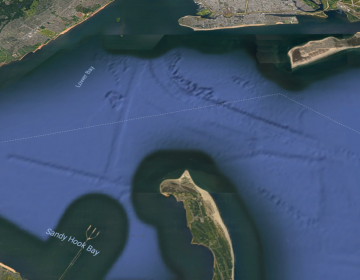N.J. congressman announces additional beach replenishment projects
More beach replenishment is on the way to the Jersey Shore, a congressman representing the northern portion of New Jersey announced.

This July 11, 2014 aerial photo shows the beach in Long Beach Township, N.J. (Wayne Parry/AP Photo)
More beach replenishment is on the way to the Jersey Shore, a congressman representing the northern portion of the Jersey Shore announced earlier this week.
Rep. Frank Pallone, Jr. says federal appropriations will fund additional beach replenishment projects in Long Branch, Sea Bright and Monmouth Beach.
“Restoration projects like beach replenishment ensure our beautiful beaches will remain safe and enjoyable for residents and tourists for years to come,” he said in a statement.
The newly announced replenishment projects, set to run from Fall 2020 through Spring 2021, are in addition to other recent and ongoing Army Corps of Engineers work in the municipalities.
It’s the latest in a years-long string of beach replenishment projects in New Jersey that have spanned all four coastal counties. Pumping sand from offshore, many of the projects have resulted in an additional beach width of between 100 and 300 feet and dunes more than 20 feet high.
Critics have questioned the efficacy of the replenishment program, citing the need to buy out flood-prone areas, elevate homes, and restore natural ecosystems. In 2019, the Surfrider Foundation, an international nonprofit environmental advocacy organization, gave New Jersey a poor grade for its coastal management practices.
Among the numerous recommendations, the report says the state should reduce the reliance on sand replenishment, utilize other methods of beach preservation, improve rebuilding standards after storms, prohibit new development in known hazard areas, establish managed retreat policies and develop sea level rise adaptation plans.
New Jersey started working on a Coastal Resilience Plan in October 2018 to protect a regional backbone in addressing climate change and extreme weather impacts instead of more isolated, localized efforts.
The plan seeks to reduce risks from flooding, improve awareness and understanding, create consistent guidance and make adaption easier.
The state held a summit at Monmouth University in 2018 that brought together officials, environmental leaders and coastal experts to begin the planning process.
WHYY is your source for fact-based, in-depth journalism and information. As a nonprofit organization, we rely on financial support from readers like you. Please give today.


